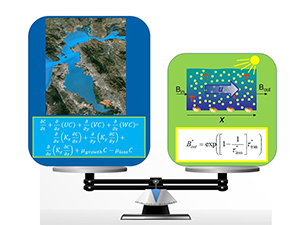A common refrain of environmental scientists is: “Environmental science isn’t rocket science. It’s harder than rocket science.” Understanding, predicting, and managing the workings of environmental systems is a grand challenge, due in no small part to the intricate interactions between physical, biological, and geochemical processes that are, individually, complex enough for whole careers to be spent deciphering them.

Fortunately, technological advancements in field and laboratory instrumentation, remote sensing, and computing have permitted us to measure and model environmental systems with ever-increasing extent and resolution. Such improvements in technological capacity are, clearly, impressive. However, so is the massive amount of generated data requiring processing and analysis in order to transform it into useful information. Furthermore, the net effect of physical-biogeochemical interactions (i.e., understanding of how a system works) may be challenging to extract from large, complex environmental datasets.
I will discuss super-simple approaches — such as those based on diagnostic timescales — that can help us (1) extract the essence from large computational or observational datasets, (2) diagnose how environmental systems work, (3) mathematically integrate processes that cross disciplines, and (4) develop computationally trivial though process-packed, high-skill models. I will draw on examples from environmental fluid dynamics, algal blooms, nutrient cycling, and hypoxia in coastal and river systems.
Lisa Lucas is a Research Engineer and Eco-hydrodynamicist with the U.S. Geological Survey. Inhabiting the interface between environmental physics and biology in aquatic ecosystems, she studies how interactions between hydrodynamics and other physical and biogeochemical processes influence water quality and aquatic ecosystem function. She works in estuarine and river systems, implementing a broad range of mathematical modeling approaches spanning multi-dimensional numerical models to simple algebraic equations solvable with pencil-and-paper.
Lisa’s work aims at improving understanding and prediction of how aquatic ecosystems work and, thereby, supporting informed ecosystem management. She loves collaborative, interdisciplinary science, as is required in her recent projects focusing on the modeling of harmful algal blooms, nutrients, and methyl mercury.
Lisa studied Civil Engineering at the University of Notre Dame and did her Master’s and Ph.D. in Civil & Environmental Engineering at Stanford University.